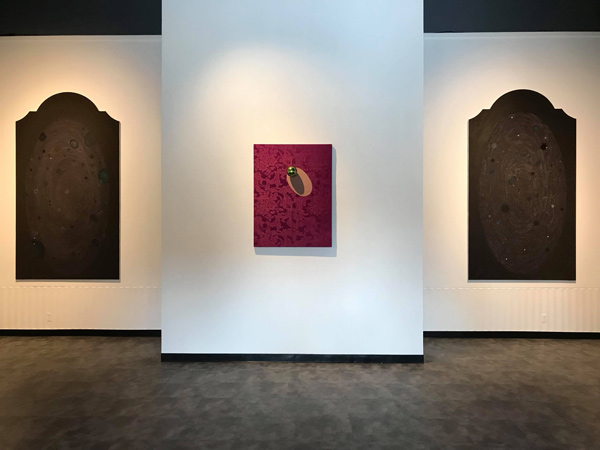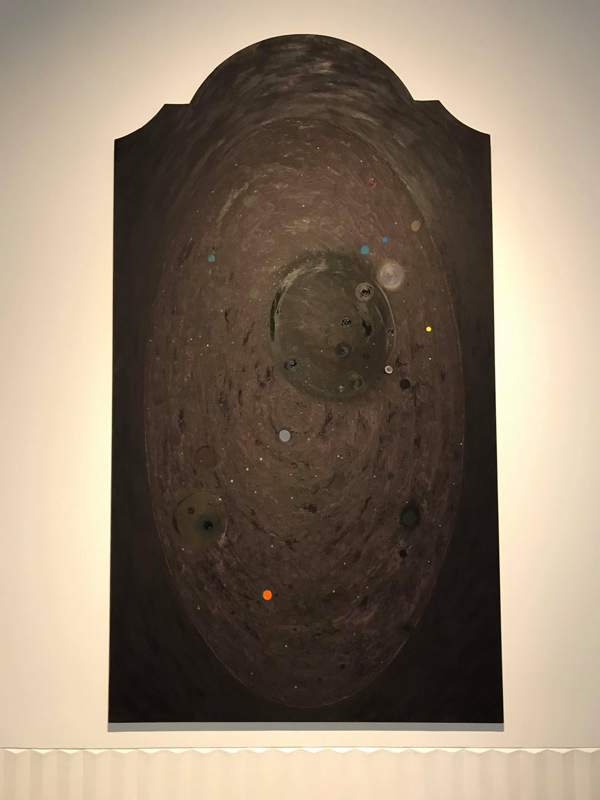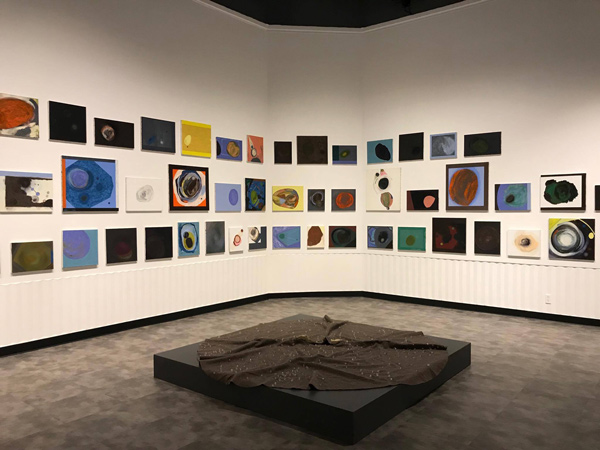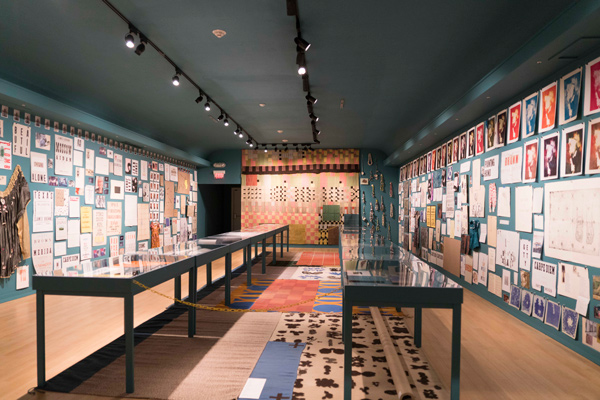USC Fisher Museum’s “James hd Brown: Life and Work in Mexico” is one of the few PST: LA/LA shows devoted to a SoCal-born expatriate. Born in Glendale in 1951, Brown settled in Oaxaca in 1995 after having lived in Europe and New York. This exhibition is ingrained with a peculiar flavor of mystification associated with the artist’s life as an emigrant.

James hd Brown, My Other House II (2015), The Green Mirror from My Other House (1994) and A Nightly Vision from the Window of My Other House III (2015). Collection of the artist. Photo courtesy of the USC Fisher Museum of Art.
Much of the displayed work is part of an ongoing series called “My Other House.” Brown conceived of this series in rural Mexico when his sons annexed a cloistered mezzanine of the family hacienda and refused to let anyone else in. Intrigued by this notion of inaccessibility, Brown decided to create his own imaginary “house” through his artwork. Ostensibly reified through paintings and collages, the nature of this fictional space remains impenetrably cryptic.

James hd Brown, A Nightly Vision from the Window of My Other House IV (2015). Oil on linen. Collection of the artist. Photo courtesy of the USC Fisher Museum of Art.
Several paintings in the museum’s center gallery are part of a 2015 sub-series called A Nightly Vision from the Window of My Other House. These canvases recalling Brown’s Catholic school days are shaped like cathedral windows, making their galactic content all the more mysterious. As astronomers peering through telescopes, we might see into Brown’s world; but we have no way of relating our view to his.

James hd Brown, Some Neighbors in the Garden of My Other House (2013). Collage, paint, and pencil on linen. Collection of the artist. Photo courtesy of the USC Fisher Museum of Art.
Some Neighbors in the Garden of My Other House (2013) is a lengthy collage of marbleized patterns, photos of roses and ceramic figurines. These motifs’ old-fashioned European appearance markedly contrasts with Brown’s southern Mexico environs. Are they intended as nostalgic mementos or self-conscious symbols for critical reflection on colonialistic Euro-centrism? It is hard to say. Brown’s diffusely written Edenic discovery narrative on an adjacent wall label further bewilders conjecture.

James hd Brown, Orb paintings (series) and Falda de Cristal skirt from James hd Brown: Life and Work in Mexico. Photo courtesy of the USC Fisher Museum of Art.
Many works seem allusive of a mystical cosmology fabricated by the artist. Most compelling are The 108 Orb Paintings (2014-2016). One can intuitively relate to these small works’ exquisite variations in tactility and color.

Carpe Diem Press section of James hd Brown: Life and Work in Mexico. Collection of USC Libraries. Photo courtesy of Eren Betin (@erenbetin).
The exhibition ends in a jungle of ephemera, books and items from Brown’s Carpe Diem Press, much of it produced in collaborations with well-known names and local Oaxacan artisans. This largely un-itemized, curious miscellany heightens one’s feeling like an outsider unversed in local argot.
James hd Brown, “Life and Work in Mexico,” Sept. 19—Dec. 2, 2017 at USC Fisher Museum of Art, 823 Exposition Blvd., Los Angeles, CA 90089, fisher.usc.edu



















0 Comments